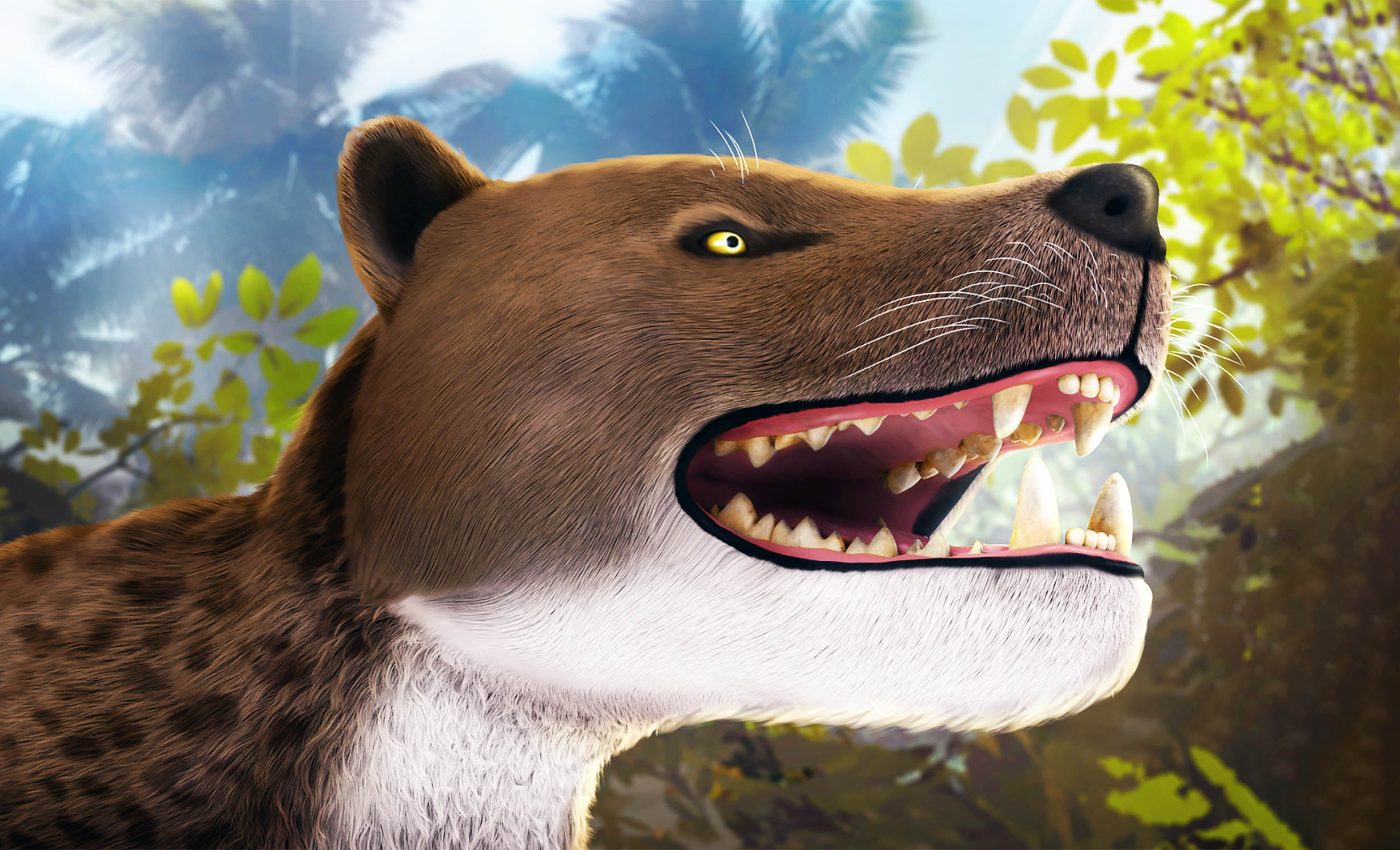
'Fearsome' predator was once king of the ancient Egyptian forests, then mysteriously vanished
A rare, nearly complete skull unearthed in the Egyptian desert has led scientists to the identification of a new species of Hyaenodonta – an extinct group of powerful carnivorous mammals that once ruled as apex predators.
The research describes a leopard-sized creature nicknamed Bastetodon after an ancient Egyptian goddess.
Boasting a robust bite and sharp, slicing teeth, this newly discovered predator would have preyed on primates, early elephants, and other mammals in a forested region that is now desert.
Bastetodon predator ruled ancient Egypt
The fossil was found by a team informally known as the Sallam Lab during an expedition to the Fayum Depression – a famous site for Paleogene fossils in northern Egypt.
Study lead author Shorouq Al-Ashqar is a paleontologist at Mansoura University and the American University in Cairoù.
“For days, the team meticulously excavated layers of rock dating back around 30 million years,” said Al-Ashqar. Just as we were about to conclude our work, a team member spotted something remarkable – a set of large teeth sticking out of the ground.”
His excited shout brought the team together, marking the beginning of an extraordinary discovery: a nearly complete skull of an ancient apex carnivore, a dream for any vertebrate paleontologist.
Using the preserved skull, the researchers determined that this apex predator was a member of Hyaenodonta, a group that thrived in African ecosystems well before the appearance of modern cats, dogs, or hyenas.
Despite the name, hyaenodonts were not closely related to hyenas but formed their own evolutionary lineage of formidable hunters.
Ruler of a prehistoric food chain
Bastetodon draws its name from Bastet, the cat-headed goddess of protection in ancient Egyptian mythology, underscoring both the fossil’s feline-like snout and its Egyptian origin.
The “-odon” suffix, meaning “tooth,” emphasizes this animal’s defining trait: powerful jaws with slicing teeth designed for capturing and cutting through flesh.

Like the goddess Bastet, which symbolized protection and good health, Bastetodon would likely have ruled the prehistoric food chain in what was then a lush, forested environment.
Revisiting Bastetodon fossils
Beyond describing Bastetodon, the study also revisits fossils discovered in the same region more than a century ago.
These lion-sized hyaenodont remains were reclassified under the genus Sekhmetops, named for the lion-headed Egyptian goddess Sekhmet, a deity associated with war and wrath.
The findings show Bastetodon and Sekhmetops both belonged to an African lineage of hyaenodonts that later spread into Asia, Europe, India, and North America.
This new evidence challenges older assumptions that placed such fossils with hyaenodont groups from Europe.
The symbolic link between Bastet and Sekhmet in ancient Egyptian lore is mirrored in these two genera of apex predators.
The researchers noted that by 18 million years ago, some related hyaenodonts evolved into the largest mammalian carnivores of their time.
Ancient predators in Egypt
The Fayum Depression, now an arid desert, once hosted a flourishing tropical habitat teeming with mammalian life.
Its rock layers, dating from the Eocene through the Oligocene, capture a 15-million-year window during which global climates shifted from warmer to cooler conditions.
The hyaenodonts thrived in this dynamic part of Egypt, feeding on the abundant herbivores and smaller predators.

Over time, tectonic events in Africa allowed modern types of carnivores – cats, dogs, and hyenas – to move in, while changing environments diminished prey for specialized hunters like Bastetodon.
Eventually, hyaenodonts disappeared, leaving newer predators to dominate the evolving African ecosystems.
“The discovery of Bastetodon is a significant achievement in understanding the diversity and evolution of hyaenodonts and their global distribution,” Al-Ashqar noted.
“We are eager to continue our research to unravel the intricate relationships between these ancient predators and their environments over time and across continents.”
Prehistoric predators to modern carnivores
“The Fayum is one of the most important fossil areas in Africa,” said study co-author Matt Borths, curator of fossils at the Duke Lemur Center Museum of Natural History.
“Without it, we would know very little about the origins of African ecosystems and the evolution of African mammals like elephants, primates, and hyaenodonts.”
Paleontologists have been working in the Fayum for over a century, but the Sallam Lab demonstrated there is more to discover in this remarkable region.
Over the decades, research in Fayum has contributed major findings about early elephants, early primates, and now, additional hyaenodont species.
Each new fossil further clarifies the interplay between climatic shifts and the rise – or extinction – of ancient mammals.
Researchers plan to continue unearthing fossils and refining the complex narrative of how prehistoric African predators adapted, diversified, and eventually gave way to modern carnivores.
The study is published in the Journal of Vertebrate Paleontology.
—–
Like what you read? Subscribe to our newsletter for engaging articles, exclusive content, and the latest updates.
Check us out on EarthSnap, a free app brought to you by Eric Ralls and Earth.com.
—–













